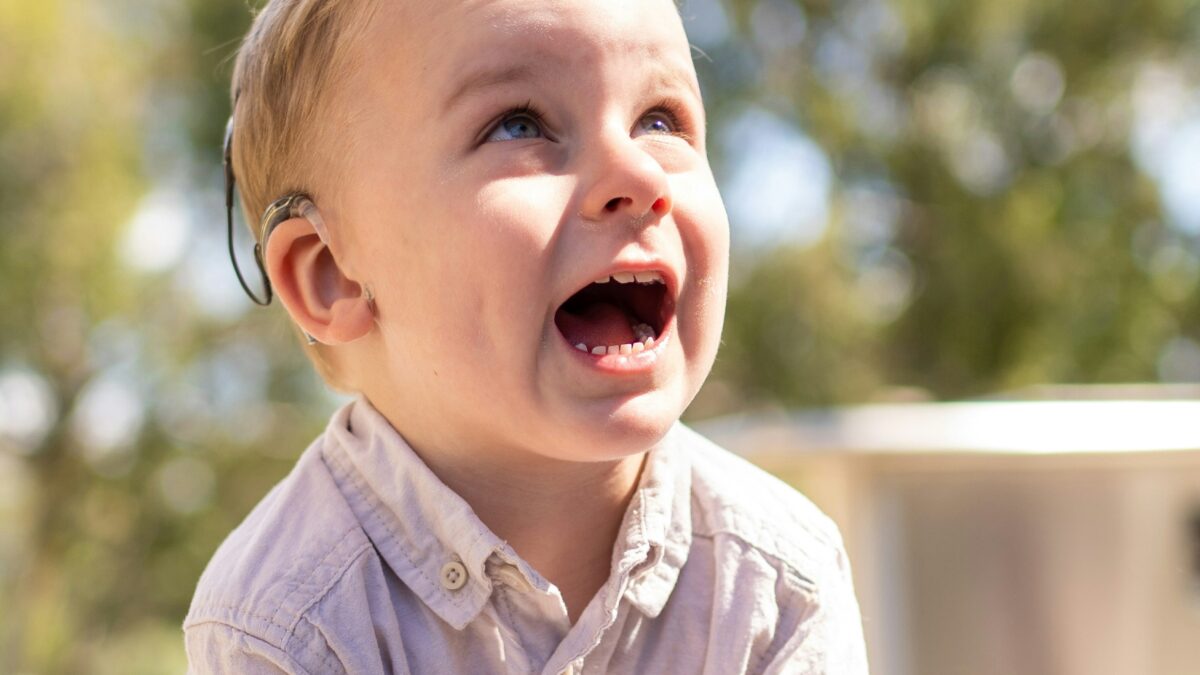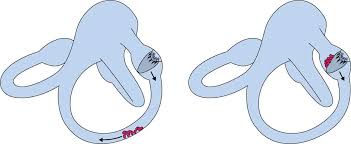CROS and BiCROS Hearing Aids for Single-Sided Deafness (SSD)
March 18, 2025
Musical Hallucinations: When the Brain Creates Sound Without an External Source
March 22, 2025The ability to hear is fundamental to human connection, communication, and development. For children born with profound genetic hearing loss, particularly due to mutations in the otoferlin (OTOF) gene, traditional interventions such as cochlear implants have been the primary means of restoring some level of auditory function. However, groundbreaking advancements in gene therapy are now showing promise in providing a more natural form of hearing restoration.
Regeneron Pharmaceuticals recently announced significant progress in their investigational gene therapy, DB-OTO, which has demonstrated clinically meaningful improvements in hearing for nearly all children who participated in the Phase 1/2 CHORD clinical trial. This study, which targets otoferlin-related hearing loss, has revealed remarkable outcomes that could potentially transform the treatment landscape for congenital deafness.
Understanding Otoferlin-Related Hearing Loss
Otoferlin is a protein that plays a crucial role in the transmission of sound signals from the inner ear’s sensory hair cells to the auditory nerve. When mutations in the OTOF gene disrupt the production of functional otoferlin, the connection between the ear and the brain is severed, leading to profound deafness from birth. Unlike other forms of hearing loss that may involve structural damage to the cochlea, otoferlin-related deafness leaves the ear’s architecture intact—making it an ideal candidate for gene therapy intervention.
How DB-OTO Works
DB-OTO is a cutting-edge gene therapy designed to deliver a healthy copy of the OTOF gene directly into the cochlear hair cells. Using an adeno-associated virus (AAV) vector, the therapy introduces functional otoferlin into the cells, allowing them to restore the ability to transmit sound signals to the brain. Because cochlear hair cells do not regenerate, this one-time treatment has the potential to provide lifelong hearing restoration.
Encouraging Clinical Trial Results
The CHORD trial, a Phase 1/2 first-in-human study, involved 12 children with profound genetic hearing loss due to otoferlin mutations. Participants ranged in age from 10 months to 16 years, with nine receiving DB-OTO in one ear and three receiving treatment in both ears.
Key findings from the study include:
- Improved Hearing Ability: Among the 11 children who had at least one post-treatment assessment, 10 demonstrated a significant improvement in hearing ability. Many were able to detect sounds at much lower decibel levels than before treatment.
- Near-Normal Hearing in Some Cases: In five participants who underwent assessments at 24 weeks, three experienced hearing improvements to “nearly normal” (≤40 dBHL) or normal (≤25 dBHL) hearing levels.
- Speech and Language Gains: One of the most remarkable cases involved a 10-month-old child who, after receiving DB-OTO, was able to engage in activities such as music appreciation and bedtime reading, even without their cochlear implant.
- Objective Confirmation Through Brain Activity: Positive auditory brainstem responses (ABRs) confirmed that the auditory nerve was successfully transmitting sound signals to the brain following treatment.
A Safe and Well-Tolerated Procedure
One of the critical considerations for any new medical treatment is safety. In the CHORD trial, DB-OTO was well tolerated by all participants. No serious adverse events related to the therapy were reported. While five participants experienced mild post-surgical vestibular symptoms such as dizziness and nausea, these symptoms resolved within six days.
The therapy is administered through an intracochlear injection, a procedure similar to cochlear implantation, making it feasible for use in infants and young children.
Regulatory Progress and Future Potential
DB-OTO has received several important designations from regulatory agencies, including Orphan Drug, Rare Pediatric Disease, Fast Track, and Regenerative Medicine Advanced Therapy status from the U.S. Food and Drug Administration (FDA). These designations highlight the therapy’s potential and could accelerate its path to approval.
Regeneron continues to work closely with regulatory authorities to determine the best way forward for bringing DB-OTO to market. The company is also exploring additional gene therapy candidates for other genetic forms of hearing loss, including conditions linked to GJB2 gene mutations.
A Paradigm Shift in Hearing Loss Treatment
For decades, cochlear implants and hearing aids have been the primary solutions for hearing loss, but they do not restore the full spectrum of sound perception. DB-OTO represents a shift toward a curative approach that directly addresses the underlying genetic cause of deafness.
This advancement is particularly significant for paediatric audiology. Early intervention is crucial for children with hearing loss, as their ability to develop speech and language skills depends on auditory input during critical developmental years. By restoring near-normal hearing in infancy, gene therapy has the potential to eliminate many of the challenges associated with early deafness, allowing children to engage more fully in the world around them.
What This Means for Families and the Audiology Community
For families with children affected by genetic hearing loss, DB-OTO provides a new sense of hope. While cochlear implants remain an effective treatment, the possibility of a one-time gene therapy that restores natural hearing function is an exciting breakthrough.
For audiologists and hearing health professionals, this development underscores the importance of genetic testing in paediatric patients with congenital hearing loss. Identifying the genetic cause of hearing impairment early could soon determine whether a child is a candidate for gene therapy, enabling more personalized and effective treatment plans.
Looking Ahead
Although DB-OTO is still in clinical trials and not yet available for widespread use, the initial results indicate a promising future for gene therapy in the field of audiology. Continued research, regulatory approval, and eventual commercialization could make this life-changing treatment accessible to children worldwide.
At The Audiology Place, we are committed to staying at the forefront of advancements in hearing health. We recognise the immense potential of gene therapy and will continue to monitor developments in this space. If you or a loved one is affected by genetic hearing loss, we encourage you to reach out to learn more about current treatment options and potential future breakthroughs.
Hearing connects us to our families, communities, and the world. With innovations like DB-OTO, the future of hearing restoration is brighter than ever. Gene therapy is not just about treating hearing loss—it’s about giving children the opportunity to fully experience the richness of sound and speech from an early age. As this field continues to evolve, it holds the promise of transforming lives and redefining what’s possible in hearing healthcare.
References
Jiang, L., Wang, D., He, Y., Shu, Y (2023). Advances in gene therapy hold promise for treating hereditary hearing loss. Molecular Therapy, Volume 31, Issue 4 p934-950
Leclere, J. & Dulon, D. (2023). Otoferlin as a multirole Ca2+ signaling protein: from inner ear synapses to cancer pathways Cell. Neurosci. Volume 17 doi: https://doi.org/10.3389/fncel.2023.1197611
Le Page, M. (2024, June 5). Gene therapy enables five children who were born deaf to hear. New Scientist. https://www.newscientist.com/article/2434183-gene-therapy-enables-five-children-who-were-born-deaf-to-hear/
Omichi, R., Shibata, S., Morton, C., Smith, R. (2019). Gene therapy for hearing loss. Human Molecular Genetics, Volume 28, Issue R1, October 2019, Pages R65–R79, https://doi.org/10.1093/hmg/ddz129
Pangršič, T., Reisinger, E., Moser, T. (2012). Otoferlin: a multi-C2 domain protein essential for hearing. Trends in Neurosciences, Volume 35, Issue 11, 671 – 680



